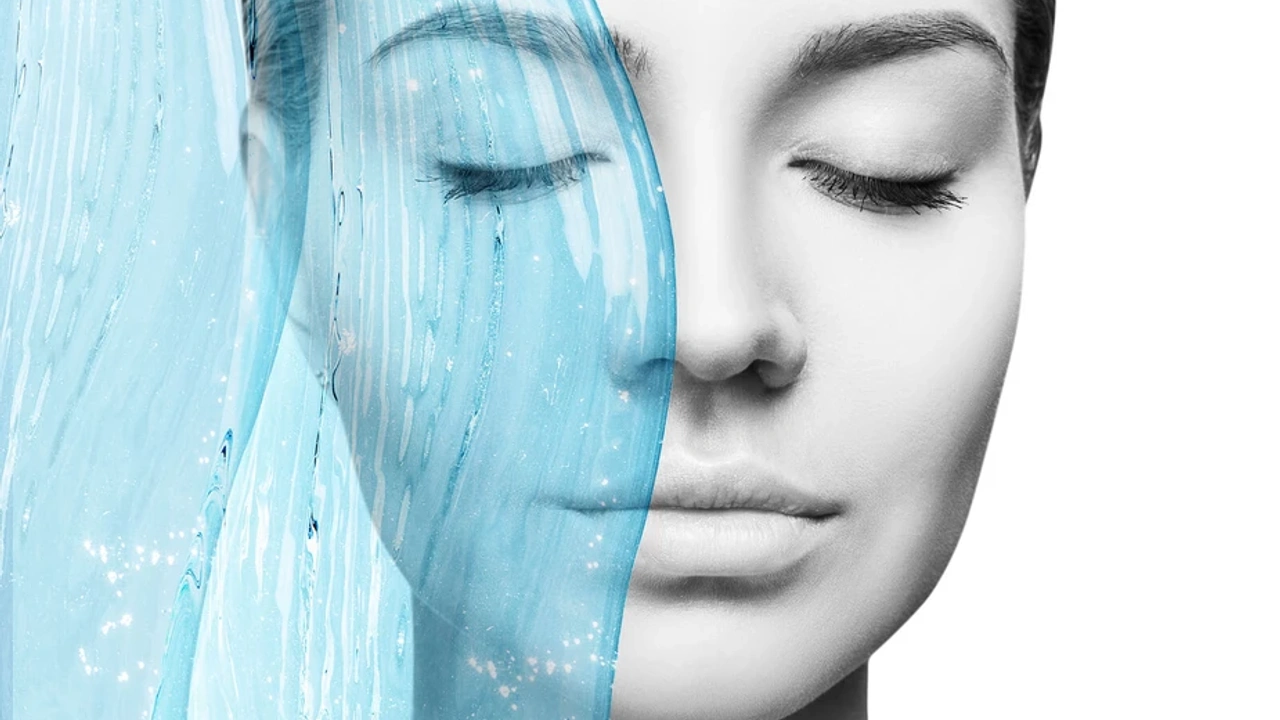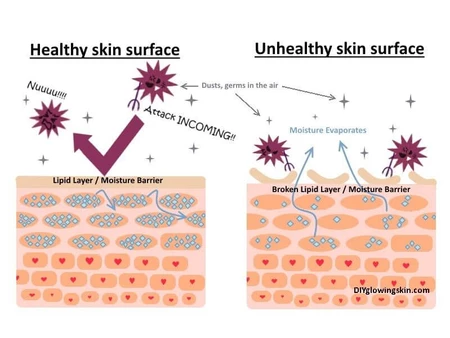What in the Heck is a Skin Moisture Barrier

Your skin is the largest organ and the only organ that is outside of your body. Unlike other organs such as your heart, liver and kidneys, they are protected inside the body, which happens to be covered by skin, that encases them.
But your skin, how does this very large organ protect itself? With more skin. And this “more skin”, is the moisture barrier, or, the very top surface or outermost layer of your skin, that protects the skin. Skin protecting skin.

The ancient Romans had a term for this moisture barrier. They called it the “stratum corneum”. Literally translated, that means the “horny layer”. Interesting! But not perhaps for the reason that may occur to you.
The stratum corneum is the outermost, top tier layer of the skin consisting of dead cells. Dead cells that are about to be replaced by fresh cells growing underneath over the course of about a month. So, these are the cells we actually see every day. And they are critical because they protect the living cells in the body.
(By the way, the “horny” might be because the roughness of dead skin reminded those Romans of animal skins)
What is the moisture barrier protecting us from?

Well, pretty much all the environmental effects that we want to keep outside of our body. This includes chemicals, bacteria, drowning from swimming or taking a shower and other bad things we want to keep out. Or keep in. And that includes all the moisture and hydration we want to stay inside!
So. The cells that our moisture barrier is, is critical to both the appearance and the health of the skin. How exactly does it work?
As mentioned, these top layers of skin are composed of dead cells; these cells need something to keep them together. That something is the ‘sebum’, another Latin word, this one meaning literally ‘grease’. More precisely, the glue holding the outer layer of cells together consists of fatty acids called lipids (this one’s of Greek origin by the way – “fats”). It is this collection of lipids that does the work of making skin soft and flexible by keeping precious moisture in and keeping the bad stuff out.
What happens if the moisture barrier is damaged?
Many of the things that we think of as skin damage can be traced back to damage to the moisture barrier layer. Symptoms like dry skin, Dermatitis, Acne, Rosacea, flakiness, and more, are often really signs that the moisture barrier is not doing its job successfully.
What to do if you suspect that moisture barrier damage is behind your skin issues?
- Don’t use harsh treatments (soaps, exfoliants, scrubbing)
- Don’t use too much water or engage in long saunas or hot baths
- Do use a moisture barrier cream that includes glycerine. Consider CeraVe Moisture Cream. I use CeraVe Moisture Cream for my moisture barrier and I love it.
- Do use products rich in lipids (think safflower oil, or squalene, for example)
- Do use humectants (like hyaluronic acid)
- Do use emollients (like glycerin and shea butter)
- Do use hyaluronic acid and glycerin together for great moisture barrier skin healing plus younger looking skin.
Most of all, live a healthy, positive lifestyle and keep down the stress level. This will help you in so many ways, including protecting that essential skin moisture barrier
- Get enough sleep
- Eat healthily
- Get your exercise in
- Drink plenty of liquids
Is it possible to protect the moisture barrier while at the same time enjoy your anti-aging protocol?
Absolutely. Follow the do’s and don’t above. Read all labels on your skin care and grocery store choices. And follow your healthy lifestyle choices to be the best version of you. Inside and out. Moisture barrier and all.
Till next time
Kellie
Growing younger every day.
References:
https://pubmed.ncbi.nlm.nih.gov/21087182/
https://www.ncbi.nlm.nih.gov/books/NBK513299/
3 Day Jumpstart to Get Glowing Skin, More Confidence, + Look and Feel Fabulous!
You can unsubscribe anytime. Please check our privacy policy.

